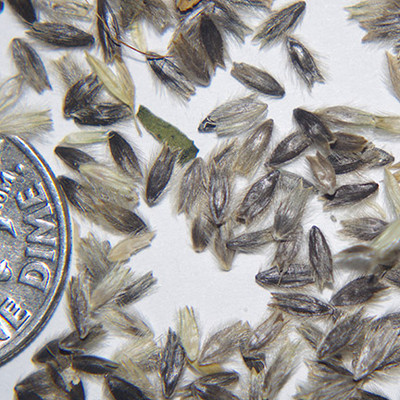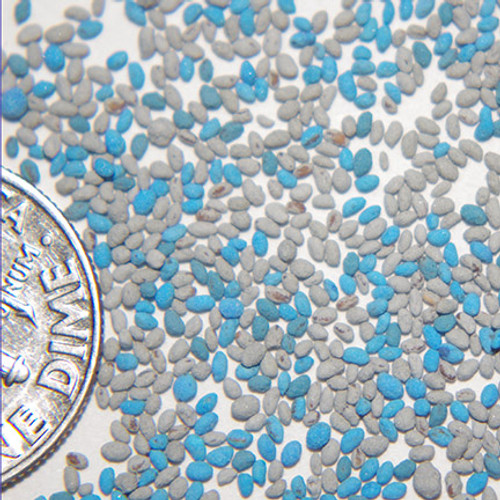Sold by the bulk pound
Creeping foxtail, Alopecurus arundinaceus is a large, long-lived, rhizomatous, sod-forming, perennial grass introduced from Eurasia. This seed is coated.
Uses
Grazing/livestock/pasture: Creeping foxtail is very well suited for pastureland or hayland. Because it does not undergo dormancy during the summer, creeping foxtail produces high yields of palatable forage season long. Plants break winter dormancy early in spring, and leaves remain green and palatable even during the hottest months. Studies indicate that creeping foxtail yields equal or exceed those of other comparable grasses.
Creeping Foxtail is palatable to all classes of livestock. Cattle show preference to creeping foxtail over other widely employed pasture grasses. In separate studies, cattle preferred creeping foxtail to smooth brome (Bromus inermis), reed canarygrass (Phalaris arundinaceus) and tall wheatgrass (Thinopyrum ponticum). In another study, cattle preferred straw from seed production fields of creeping foxtail over thickspike wheatgrass (Elymus lanceolatus), western wheatgrass (Pascopyrum smithii), basin wildrye (Leymus cinereus) and others. It can be seeded in pure stands or with a legume. This species produces numerous aggressive underground rhizomes. These contribute to long-lived stands and an ability to recover quickly from grazing.
Filter fields
Because of creeping foxtail’s tolerance to high levels of fertilizer, particularly nitrogen and water, it can be used in filter fields for liquid waste disposal. It can also be used in a variety of other water settings including sewage treatment, food processing and livestock waste removal programs. With suitable moisture, creeping foxtail can also be used as an excellent silt trap. This species is known to tolerate up to six inches of silt per single deposition.
Erosion control
Creeping foxtail’s vigorous rhizome production (up to 120 cm crown diameter/year) and water tolerance make it well suited to erosion control and stream bank stabilization. Creeping foxtail can tolerate both high water levels and periods of drought, it can be used on earthen dams where water levels fluctuate. It survives in a broad range of pH, making it suitable for mine spoils, saline seeps (tolerant to ECs of 12) bogs and acidic roadways.
Wildlife
All manner of wildlife benefit from the forage and cover provided by creeping foxtail. Elk and deer eat the succulent forage in the spring and fall. The tender spring growth also provides forage for geese and other waterfowl. Numerous species of birds use the dense growth for cover and nesting habitat. Creeping foxtail has been used for plantings around ponds, lakes, grassed waterways and other waterways.
Adaptation
Creeping foxtail is adapted to cold temperatures and wet conditions. It is extremely winter hardy. It can establish and survive in areas where frost-free periods average less than 30 days annually. Studies indicate creeping foxtail outperforms smooth brome on flooded permafrost soils in Alaska. It also grows well at a broad range of elevations (500-9000 ft), but grows best on middle to high elevation wet to semi-wet sites.








